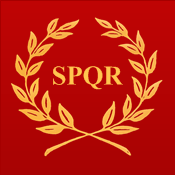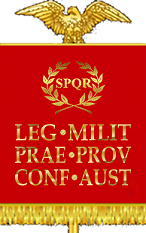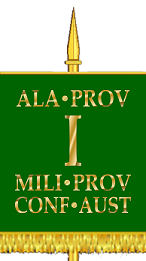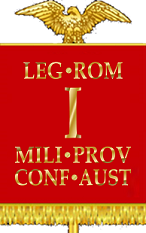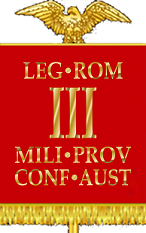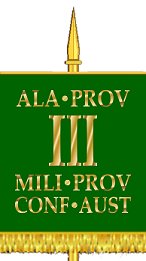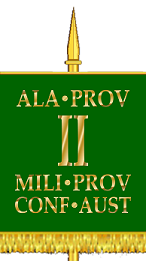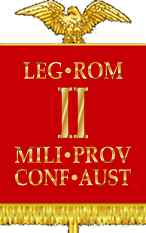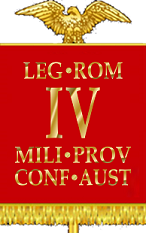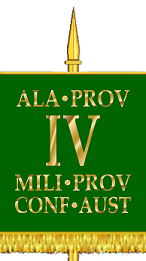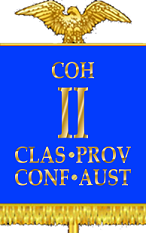|
The Provincia of America Transappalachiana in Nova Roma comprises the States of Tennessee (Territorium Tanasium) and Kentucky (Territorium Kentucium). The Territories are further broken down into five (5) local Regiones:
- Regio Volesia ~ East Tennessee, containing the counties of: Anderson, Bledsoe, Blount, Bradley, Campbell, Carter, Claiborne, Cocke, Cumberland, Grainger, Greene, Hamblen, Hamilton, Hancock, Hawkins, Jefferson, Johnson, Knox, Loudon, McMinn, Marion, Meigs, Monroe, Morgan, Polk, Rhea, Roane, Scott, Sevier, Sullivan, Unicoi, Union, and Washington
- Regio Vandia ~ Middle Tennessee, containing the counties of: Bedford, Cannon, Cheatham, Clay, Coffee, Cumberland, Davidson, DeKalb, Dickson, Fentress, Franklin, Giles, Grundy, Hickman, Houston, Humphreys, Jackson, Lawrence, Lewis, Lincoln, Macon, Marshall, Maury, Montgomery, Moore, Overton, Perry, Pickett, Putnam, Robertson, Rutherford, Sequatchie, Smith, Stewart, Sumner, Trousdale, Van Buren, Warren, Wayne, White, Williamson, and Wilson."
- Regio Tigris ~ West Tennessee, containing the counties of: Benton, Carroll, Chester, Crockett, Decatur, Dyer, Fayette, Gibson, Hardeman, Hardin, Haywood, Henderson, Henry, Lake, Lauderdale, Madison, McNairy, Obion, Shelby, Tipton, and Weakley
- Regio Fodinae ~ Western Kentucky, containing the counties of: Adair, Allen, Ballard, Barren, Breckenridge, Butler, Caldwell, Calloway, carlisle, Christian, Clinton, Crittenden, Cumberland, Davies, Edmunson, Fulton, Graves, Grayson, Green, Hancock, Hardin, Hart, Henderson, Hickman, Hopkins, Larue, Livingston, Logan, Lyon, Marshall, McCracken, McLean, Meade, Metcalfe, Monroe, Muhlenberg, Ohio, Russell, Simpson, Taylor, Todd, Trigg, Union, Warren, and Webster
- Regio Gramen Caerulus ~ Eastern Kentucky, containing the counties of: Anderson, Bath, Bell, Boone, Bourbon, Boyd, Boyle, Bracken, Breathitt, Bullitt, Campbell, Carroll, Carter, Casey, Clark, Clay, Elliot, Estill, Fayette, Fleming, Floyd, Franklin, Gallatin, Garrard, Grant, Greenup, Harlan, Harrison, Henry, Jackson, Jefferson, Jessamine, Johnson, Kenton, Knott, Knox, Laurel, Lee, Leslie, Letcher, Lewis, Lincoln, Madison, Magoffin, Marion, Martin, Mason, McCreary, Menifee, Mercer, Montgomery, Morgan, Nelson, Nicholas, Oldham, Owen, Owsley, Pendleton, Perry, Pike, Powell, Pulaski, Robertson, Rockcastle, Rowan, Scott, Shelby, Spencer, Trimble, Washington, Wayne, Whitley, Wolfe, and Woodford
The Provincia was organized and created by order of the Senate of Nova Roma on a.d. IX Kal. Nov. 2766 a.u.c. (Oct. 24, 2013) and is one of the numerous Provinciae of Nova Roma, each of which has its own governor and organizes its own events and activities.
Nova Roma has much to offer to all those interested in the many facets of Ancient Rome. We have many associations known as Sodalitates which are dedicated to studying a wide range of topics, including but not limited to the Roman military, the Latin Language, and various cultural arts. Provinces hold events to promote membership and encourage participation. Nova Roma is diverse enough to accommodate almost any field of interest in Ancient Rome, including the Religio Romana.
For administrative purposes, the provincia is also divided into Regiones, geographically corresponding to modern political districts, each of which is assigned a Legate, who deals with the day-to-day running of his or her Regio.
The Provincia is administered by a Governor appointed by the Senate of Nova Roma. The Governor has the power of imperium and can issue edicts (laws on the provincial level). The Governor can also appoint Legati and Scribae. All of these have different titles (see the Cohors Propraetoris).
The Provincia is not a self-governing entity, rather it is managed by the Governor who acts according to the will of the Senate of Nova Roma.
Praetorium
The Praetorium is the office of the governor of a Nova Roman province. The governor is assisted by a staff like that of a present day government.
The staff personnel of the Praetorium, the Cohors praetoria, handle areas like the treasury, the military, interprovincial relations, and public games and gatherings. The Cohors Praetoria consists of all the assistants (legati, praefecti and scribae) of the governor.
All legati and praefecti are part of the Consilium provinciae, the inner circle of the Cohors. All other officials appointed by the governor are parts of the outer circle of the Cohors. This does not mean that they lack in importance. On the contrary, they each have an important field of responsibility.
The whole Cohors is the modern equivalent of the advisors of the provincial Governor of Roma Antiqua. The governor's retinue in antiquity was in many respects a military one, today they are valuable advisors and administrative assistants.
As the governors of the old days, the governor expects a certain loyalty, discipline and unity from the Cohors Praetoria. The members of the Consilium Provinciae should, as a kind of General's staff, set an example in this and all Roman behavior to the rest of the Cohors.
Legatus pro praetore
- Senator Lucius Vitellius Triarius
- Praetorium: Petra vadem, Volesia, Tanasium (Rockford, East District, Tennessee)
- Oath of Office: ML# 92525
Consilium provinciae
PRAETORIUM
- Legatus provincialis: [VACANT] ~ Civic Group Coordinator for Province | Resides at: [Location]
- Legatus militum: [VACANT] ~ Military Group Coordinator for Province | Resides at: [Location]
- Praefectus classis: [VACANT] ~ Naval Group Coordinator for Province | Resides at: [Location]
- Sacerdos provincialis: [VACANT] ~ Religio Group Coordinator for Province; Provincial Priest/Priestess | Resides at: [Location]
TERRITORIUM TANASIUM (TN)
- Tribunis territorio I: [VACANT] ~ State Coordinator for Tennessee | Resides in Arx at: [Location]
- Praefectus regionis I: [VACANT] ~ Regional Coordinator for East Tennessee | Resides in Praesidium at: [Location]
- Praefectus regionis II: [VACANT] ~ Regional Coordinator for Middle Tennessee | Resides in Praesidium at: [Location]
- Praefectus regionis III: [VACANT] ~ Regional Coordinator for West Tennessee | Resides in Praesidium at: [Location]
TERRITORIUM KENTUCIUM (KY)
- Tribunis territorio II: [VACANT] ~ State Coordinator for Kentucky | Resides in Arx at: [Location]
- Praefectus regionis IV: [VACANT] ~ Regional Coordinator for Western Kentucky | Resides in Praesidium at: [Location]
- Praefectus regionis V: [VACANT] ~ Regional Coordinator for Eastern Kentucky | Resides in Praesidium at: [Location]
Cohors praetoria
- Members of the Consilium provincae
- Praefectus castrorum: [VACANT]
- Scriba propraetoris: [VACANT]
Applying for Provincial Vacancies
Citizens interested in applying for open positions in the Provincia should contact the Governor at lvtriarius at yahoo dot com.
Sacellum of the Principia
Provincial Vexillationes
Provincial Pantheon of Patron Deities
Female Deities
- Appiades ~ The five Roman goddesses who had a temple near the Appian aqueducts. They are Concordia, Minerva, Pax, Venus, and Vesta.
- Concordia ~ The Roman goddess of concord. She was worshipped in many temples, but the oldest was on the Forum Romanum and dates back to 367 BCE and was built by Camilus. The temple also served as a meeting-place for the Roman senate. Concordia is portrayed sitting, wearing a long cloak and holding a sacrificial bowl in her left hand and a cornucopia in her right. Sometimes she can be seen standing between two members of the Royal House who clasp hands.
- Minerva ~ The Roman goddess of wisdom, medicine, the arts, dyeing, science and trade, but also of war. As Minerva Medica she is the patroness of physicians. She is the daughter of Jupiter. In the temple on the Capitoline Hill she was worshipped together with Jupiter and Juno, with whom she formed a powerful triad of gods. Another temple of her was located on the Aventine Hill. The church of Santa Maria sopra Minerva is built on one of her temples. Every year from March 19 - 23 the Quinquatria was held, the primary Minerva-festival. This festival was mainly celebrated by artisans but also by students. On June 13 the minor Quinquatrus was observed. Minerva is believed to be the inventor of numbers and musical instruments. She is thought to be of Etruscan origin, as the goddess Menrva or Menerva. Later she was equated with the Greek Athena.
- Pax ~ Pax ("peace") is the personified Roman goddess of peace, corresponding with the Greek Eirene. Under the rule of Augustus, she was recognized as a goddess proper. She had a minor sanctuary, the Ara Pacis, on the Campus Martius, and a temple on the Forum Pacis. A festival in her honor was celebrated on January 3. Her attributes are the olive branch, a cornucopia, and a scepter.
- Venus ~ The Roman goddess of love and beauty, but originally a vegetation goddess and patroness of gardens and vineyards. Later, under Greek influence, she was equated with Aphrodite and assumed many of her aspects. Her cult originated from Ardea and Lavinium in Latium. The oldest temple known of Venus dates back to 293 BCE, and was inaugurated on August 18. Later, on this date the Vinalia Rustica was observed. A second festival, that of the Veneralia, was celebrated on April 1 in honor of Venus Verticordia, who later became the protector against vice. Her temple was built in 114 BCE. After the Roman defeat near Lake Trasum in 215 BCE, a temple was built on the Capitol for Venus Erycina. This temple was officially opened on April 23, and a festival, the Vinalia Priora, was instituted to celebrate the occasion. Venus is the daughter of Jupiter, and some of her lovers include Mars and Vulcan, modeled on the affairs of Aphrodite. Venus' importance rose, and that of her cult, through the influence of several Roman political leaders. The dictator Sulla made her his patroness, and both Julius Caesar and the emperor Augustus named her the ancestor of their (Julian) family: the 'gens Julia' was Aeneas, son of Venus and the mortal Anchises. Ceasar introduced the cult of Venus Genetrix, the goddess of motherhood and marriage, and built a temple for her in 46 BCE. She was also honored in the temple of Mars Ultor. The last great temple of Venus was built by the emperor Hadrianus near the Colusseum in 135 CE. Roman statues and portraits of Venus are usually identical to the Greek representations of Aphrodite.
- Vesta ~ One of the most popular and mysterious goddesses of the Roman pantheon. Vesta is the goddess of the hearth, equated with the Greek Hestia. There is not much known of her origin, except that she was at first only worshipped in Roman homes, a personal cult. Her cult eventually evolved to a state cult. One myth tells that her service was set up by king Numa Pompilius (715-673 BCE). In her temple on the Palatine Hill, the sacred fire of the Roman state burned, which was maintained by the Vestal Virgins. At the start of the new Roman year, March 1, the fire was renewed. The sacred fire burned until 394 CE. Vesta's temple was situated on the Forum Romanum and was built in the third century BCE. None of her temples, however, contained a statue of the goddess. Her festival is the Vestalia, which was observed from June 7 - 15. On the first day of this festival, the 'penus Vestae', the inner sanctum of the Vesta temple which was kept closed the entire year, was opened for women who came to bring offerings bare-footed. The temple was ritually cleansed on the last day. The ass is Vesta's sacred animal, whose braying supposedly kept the lascivious Priapus away. Vesta is portrayed as a stern woman, wearing a long dress and with her head covered. Her right hand rests against her side and in her left hand she holds a scepter.
- Bubona ~ The Roman goddess of horses and cattle. She is equal to the Gaulish goddess Epona, whose cult was later adopted by the Roman army.
- Diana ~ The Roman goddess of nature, fertility and childbirth. She is closely identified with the Greek goddess Artemis. Diana is also a moon-goddess and was originally worshipped on the mountain Tifata near Capua and in sacred forests (such as Aricia in Latium). Her priest lived in Aricia and if a man was able to kill him with a bough broken from a tree in this forest, he would become priest himself. Also torch-bearing processions were held in her honor here. Later she was given a temple in the working-class area on the Aventine Hill where she was mainly worshipped by the lower class (plebeians) and the slaves, of whom she was the patroness. Slaves could also ask for asylum in her temple. Her festival coincided with the idus (13th) of August. Diana was originally a goddess of fertility and, just as Bona Dea, she was worshipped mainly by women as the giver of fertility and easy births. Under Greek influence she was equated with Artemis and assumed many of her aspects. Her name is possibly derived from 'diviana' ("the shining one"). She is portrayed as a huntress accompanied by a deer. Diana was also the goddess of the Latin commonwealth.
- Hippona ~ The Roman goddess of horses. Her image is derived from the Gallic goddess Epona, whose cult was adopted by the Roman soldiers.
Male Deities
- Apollo ~ Apollo, Greek God of the Sun, prophecy, archery, music, poetry, inspiration and healing, perfection of male beauty, twin brother of Diana. Apollo came to prominence in the 5th century BCE, when the Sibylline Books of Apollo's prophecy (which had been offered to King Tarquinius Superbus by the Sibyl of Cumae) dictated the introduction of His cult in Rome following a plague. Besides Cumae, His oracles were also in other places such as Ionia, Delos, Delphi, Erithrea. It was Apollo who gave the gift of prophecy to His lover Cassandra, who was doomed to speak the truth, but never to be believed. Apollo is father of the God Aesculapius.
- Iuppiter Optimus Maximus ~ Iuppiter is the God of the sky, moon, winds, rain and thunder, who became king of the Gods after overthrowing his father Saturnus. The ancient name of Iuppiter was Diespiter, whose root is Dios (= Zeus, God) + Pater (= Father). As Iuppiter Optimus Maximus, he is the tutelary God of Rome. As a warrior, he is Iuppiter Stator, protector of the City and State who exhorts soldiers to be steadfast in battle. But Iuppiter has many aspects, attributes, names and epithets.
- Mars ~ The god of war, and one of the most prominent and worshipped gods. In early Roman history he was a god of spring, growth in nature, and fertility, and the protector of cattle. Mars is also mentioned as a chthonic god (earth-god) and this could explain why he became a god of death and finally a god of war. He is the son of Jupiter and Juno. According to some sources, Mars is the father of Romulus and Remus by the Vestal Ilia (Rhea Silvia). Because he was the father of these legendary founders of Rome, and thus of the Roman people, the Romans styled themselves 'sons of Mars'. His main sanctuaries where the temple on the Capitol, which he shared with Jupiter and Quirinus, the temple of Mars Gradivus ("he who precedes the army in battle") where the Roman army gathered before they went to war, and the temple of Mars Ultor ("the avenger"), located on the Forum Augustus. The Campus Martius ("field of Mars"), situated beyond the city walls, was also dedicated to him. Here the army was drilled and athletes were trained. In the Regia on the Forum Romanum, the 'hastae Martiae' ("lances of Mars") were kept. When these lances 'moved', it was seen as a portent of war. The warlord who was to lead the army into battle had to move the lances while saying 'Mars vigila' ("Mars awaken"). As Mars Gradivus, the god preceded the army and led them to victory. He had several festivals in his honor. On March 1, the Feriae Marti was celebrated. The Armilustrium was held on October 19, and on this day the weapons of the soldiers were ritually purified and stored for winter. Every five years the Suovetaurilia was held. During these fertility and cleansing rites, a pig (sus), a sheep (ovis) and bull (taurus) were sacrificed. The Equirria were on February 27 and March 14, on which horse races were held. The Quinquatrus was on March 19 and the Tubilustrium on March 23, on which weapons and war-trumpets were cleansed. The priests of Mars, who also served Quirinus, were called the Salii ("jumpers"), derived from the procession through the streets of the city which they completed by jumping the entire way and singing the Carmen Saliare. Mars' own priest was called the flamen Martialis. Mars is portrayed as a warrior in full battle armor, wearing a crested helmet and bearing a shield. His sacred animals are the wolf and the woodpecker, and he is accompanied by Fuga and Timor, the personifications of flight and fear. The month March (Martius) is named after him (wars were often started or renewed in spring). His Greek equivalent is the god Ares.
- Neptune Equester ~ The god and patron of horse-racing and horses.
Tabularium
Edicta
Governor's Annual Report to the Senate
Provincial Blank Forms
Local Communities
Start a Local Group of Nova Romans TODAY!
Citizens are encouraged to establish local communities under the guidance and direction of Nova Roma. Local groups may be formally recognized in two ways. First, a group of three (5) or more citizens may apply for and be granted the provincial status of a local group. Local groups may be formed in four different categories: Civitas (City-Building), Militum (Legion-Building), Navalis (Naval Ship-Building), and/or Religio (Temple-Building) groups. Once groups have attained a certain level of membership, groups of different types can be grouped together to form larger community groups. See the Provincial Handbook for more information on getting started.
All groups are self-governing entities, which elect their own Magistrates and Assemblies, and issue their own edicts (edicta) and laws (leges).
Leges approved by the comitia of a local community shall have precedence over edicta of local magistrates of that community. Leges of a local community and edicta issued by local magistrates shall take a lower precedence than the constitution and laws of Nova Roma, the senatus consulta of the Senate of Nova Roma, and the decreta of the pontifical and augural colleges of Nova Roma.
The actions of local comitia and magistrates shall be subject to intercessio by the Provincial Governor and by the Tribuni Plebis and Curule Magistrates of Nova Roma in accordance with the constitution and laws of Nova Roma.
Local magistrates shall be considered under the authority of the Governor of the Provincia, and/or as delegated/regulated through his/her Legates (Praefectus/Praefecta Regionis) in terms of authority conflict.
For more information on forming a Local Group in your area
Review the Provincial Handbook, then contact the Praefectus Regio for your home region or the Governor of the Provincia.
Current Projects
None at this time
Upcoming Events
None at this time
Provincial History
The Provincia was organized and created by order of the Senate of Nova Roma on a.d. IX Kal. Nov. 2766 a.u.c. (Oct. 24, 2013) from the former Provincia America austrorientalis (established at the founding of the Res publica).
Links
None at this time
Provincial Mailing Lists
- Provincial Main List ~ This list is an open list for citizens and friends of the Province. If you are a New Citizen, we encourage you to sign-up on this list to keep abreast of activities and events in the Provincia.
- Consilium provinciae List ~ This is a restricted list is for members of the Consilium provinciae.
- Cohores praetoria List ~ This is a restricted list is for members of the Cohors praetoria.
|
